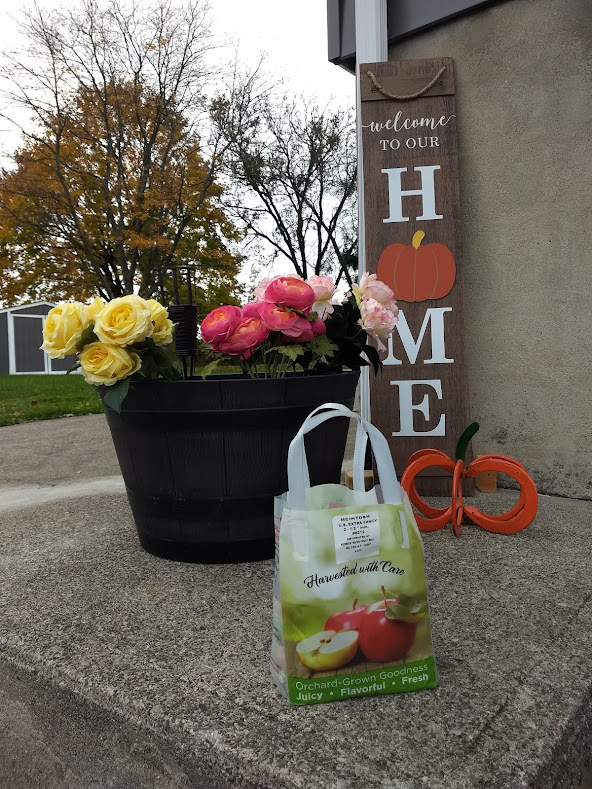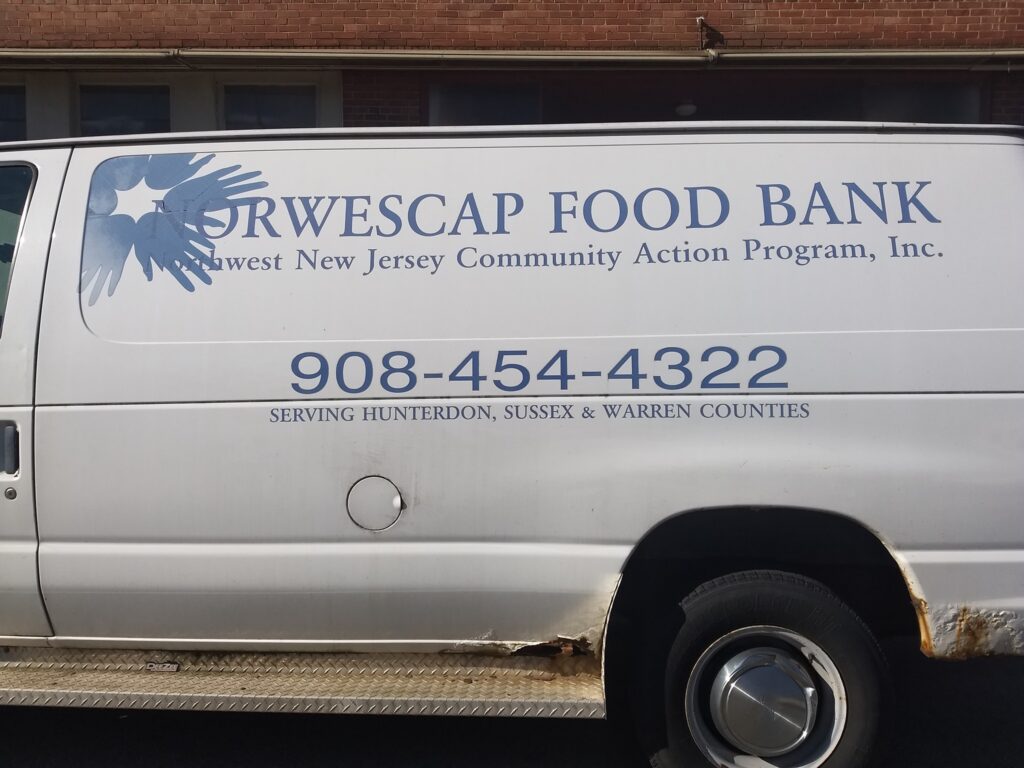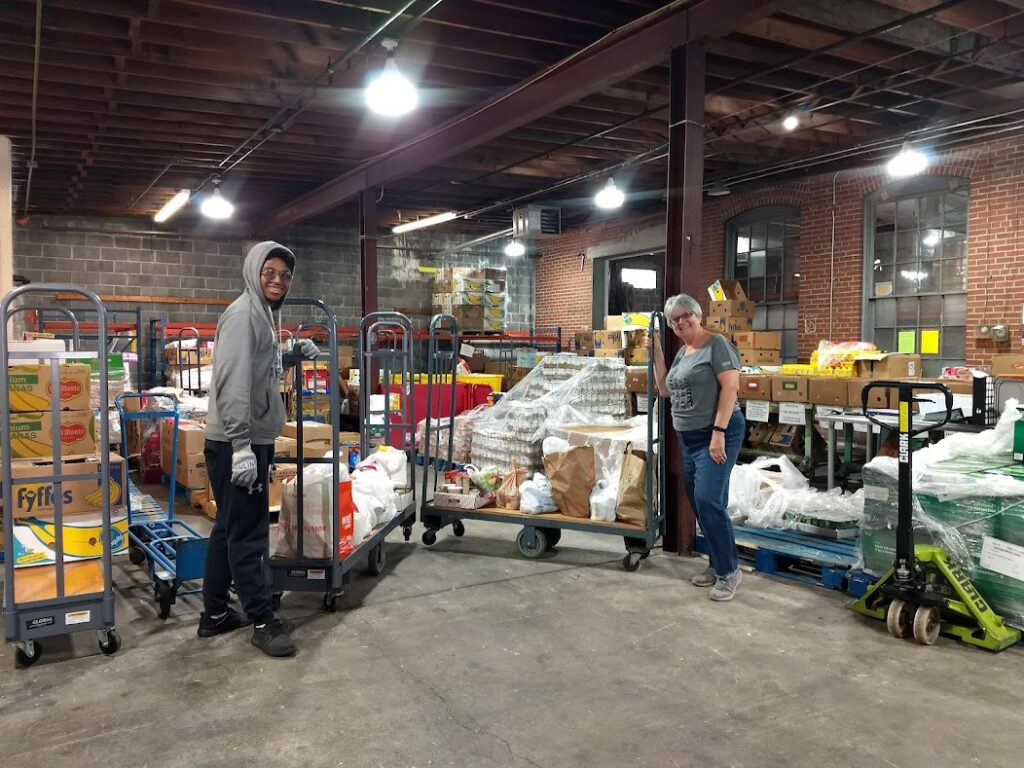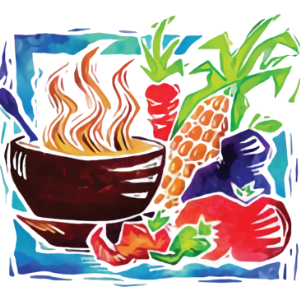Since 2020, many families have experienced a change in income and employment status. Food pantries in NJ and across the United States are stepping up their efforts to create awareness, educate the public and broaden their reach to communities in need.
This includes establishing food pantry presence and access to the USDA-managed TEFAP (The Emergency Food Assistance Program).
In addition to providing nourishment for households in need of emergency food assistance, the TEFAP program also works to reduce food waste.
Food Pantry Q&A
What is Food Insecurity?
Food insecurity is a household-level economic and social condition of limited or uncertain access to adequate food. Food insecurity is influenced by income, employment, race/ethnicity, and disability. Neighborhood conditions, physical access to food, and lack of transportation all contribute to food insecurity among certain populations.
Food insecurity increases risk for obesity, chronic disease in adulthood, and developmental and mental health problems in children.
The USDA has a goal of increasing food security for populations in need. They are also expanding awareness and community outreach of what is coming to be known as nutrition security:
“Nutrition security means consistent access, availability, and affordability of foods and beverages that promote well-being, prevent disease, and, if needed, treat disease, particularly among racial/ethnic minority, lower income, and rural and remote populations including Tribal communities and Insular areas.”
The USDA’s stated objectives for nutrition security in the US are as follows:
“Recognizing that Americans, in general, fall short of an active, healthy lifestyle aligned with federal dietary and physical activity guidelines, and Emphasizing equity to ensure our efforts serve all populations to promote access, availability, and affordability to foods and beverages, and address the connection between food insecurity and diet-related chronic diseases.”
SOURCE: Food and Nutrition Security | USDA
How Do Food Pantries Work?
US Food Pantries are managed by the US Department of Agriculture (USDA) via TEFAP (The Emergency Food Assistance Program) which is managed at the state level. This and other food assistance programs are available to those who qualify based on household income.
Food pantry food is 100% US-grown, with the goal of providing food selections that adhere to USDA nutrition guidelines.
Some examples of foods that may be obtained from a food pantry include USDA meat, eggs, fresh and shelf milk, fresh and frozen fruits and vegetables, and a wide assortment of canned, jarred, boxed and otherwise packaged food goods that are procured from food vendors, purchased using federal funds, and donated from organizations and individuals.
Food pantries also receive a large portion of their food through community donations. This includes donations from individuals or families, nearby farms, and large food drives through local schools, sports teams, scout troops and churches.
Where Do US Food Pantries Get Their Food?
The US Department of Agriculture (USDA) procures high quality, nutritious food from participating vendors throughout the United States.
The food is packed and transported to food banks who then distribute the food packages to local food pantries.
USDA quality standards must also be met, including quantity and variety of foods distributed; proximity of the food vendor to the food bank destination; quality and nutritional value of the food; and criteria and guidelines by which the food is safely procured, packaged, transported, and stored.
NORWESCAP Food Bank supplies food pantries in the surrounding area. The food is purchased using federal funds alloted for the TEFAP emerency food assistance program. It is also donated by members of the community via food drives and individual contributions.
How to Apply to a Food Pantry in NJ
Step 1: Call or email a food pantry that’s close to home.
Determine the food pantry that would make the most sense for you to travel to. If you’re not sure, just start by calling one of them and ask.
A food pantry volunteer will explain the registration process and the income eligibility guidelines. Income eligibility can be different depending on which pantry you choose and the town or county the pantry is located.
A Registration Packet can be completed at your first appointment or emailed to you ahead of time. You will also be asked to provide proof of income, proof of residency and some information about members of your household.
Step 2: Complete and collect documents.
Complete the Registration Packet, if it has been emailed to you, as best as you can. Gather any documents the food pantry may need to complete your registration (i.e. proof of income).
Step 3: Schedule and attend your first food pantry appointment.
A food pantry volunteer will work with you to finish your registration. He or she will explain the pantry’s shopping process and assist you in filling out your shopping list.
You will be informed about your USDA options (meat, milk, grain, produce) as well as local fresh produce and bakery items; and canned and packaged foods from the pantry shelves, that have been donated from the community.
Once you complete your food and grocery selections, food pantry volunteers will bag up all of your food and help you load it into your vehicle to take home.

Food bank donations from neighborhood friends at Thanksgiving.
How much and how often may I obtain food from a NJ food pantry?
The number of choices you’ll have from each food group (USDA meats/items, grains, vegetables, soups, etc) will depend on your family size and the current supply of government and local donations.
Your food pantry volunteers will work with you on setting up two appointments each month. At your appointment, pantry volunteers will pack up the items that you selected from the shopping list.
While they bag up your food, you will be able to make your own, additional selections from the donated produce, breads and packaged shelf foods section of the food pantry.
Helpful tip: recycled egg cartons (clean) and reusable grocery bags in good condition are always appreciated at the food pantry.
What other food assistance programs are available in New Jersey?
New Jersey is a leader among US states in the ongoing mission to reduce food insecurity and provide adequate nourishment to various population groups. As of 2023, the current food assistance programs offered in NJ include:
- National School Lunch Program (NSLP)
- School Breakfast Program (SBP)
- The Emergency Food Assistance Program (TEFAP)
- Child and Adult Care Food Program (CACFP)
- Summer Food Service Program (SFSP).
Food Pantries in NJ: How Else Can You Help?
Gretchen Surhoff of the Open Cupboard Food Pantry in Clinton, NJ and the Washington Food Basket of Washington, NJ credits generous community members for the success of these local food emergency programs:
“USDA food makes a big difference for food pantry clients throughout the country. But without the support of the community through food drives and people dropping off a bag or two, we wouldn’t even come close to being able to help the number of clients we have at the Open Cupboard pantries.”
Here’s how you can help support food pantries in your community:
- Increase awareness by sharing what you know and passing along information about food pantries and the USDA’s food assistance program.
- Donate food and funds to your local food bank and food pantries when able.
- Volunteer to help at your local food pantry.
- Participate in seasonal food drives organized by grocery stores and community organizations.
- Follow your local food pantries on social media to learn what items they currently need, and share with your social media connections.
- Organize your own community food drive to support food banks and food pantries in your area. You can offer to pick up canned and boxed food donations, to deliver to your local participating agencies.
- Consider donating food, grocery or toiletry items that you don’t need or can’t use, to your local food bank.
- If you accept assistance from a food pantry, only take what you know you’ll use.
- Routinely do an inventory check of your kitchen pantry and cabinets to see what unused items with shelf-life left in them you may offer to those in need.
- As a food pantry client, communicate allergies, sensitivities and food restrictions to your food pantry so you won’t end up with products that you can’t use and that may go to waste.
- If you’re a food grower or distributing company, apply to be a participating vendor in the TEFAP progam.
- Convey the positive effect of food pantry and food bank presence in your community: greater food security, less food waste, increasing knowledge of how to prepare nutritious meals and lowered risk of chronic disease as a result of access to nourishing foods.
Need to Find a Food Pantry in Hunterdon or Warren County, NJ?
Washington Basket Food Pantry
Washington Basket Food Pantry (affiliated with the Open Cupboard Food Pantry of Clinton, NJ)
386 East Washington Avenue
Port Colden Mall
Washington, NJ 07882
Email: opencupboardfoodpantry@comcast.net
https://www.opencupboardfoodpantry.org
Open Cupboard Food Pantry of Clinton, NJ
Open Cupboard Food Pantry and Thrift Shop
Phone: 908 730-7320
Email: opencupboardfoodpantry@comcast.net
https://www.opencupboardfoodpantry.org
Flemington Area Food Pantry
Flemington Area Food Pantry
154 Route 31 North
Flemington, NJ
(908) 788-5568
http://flemingtonfoodpantry.org/
DONATE to NORWESCAP Food Bank in Phillipsburg, NJ

NORWESCAP Food Bank and Thrift Shop
201 Broad St, Phillipsburg, NJ
908-454-7000
foodbank@NORWESCAP.org
RESOURCES:
- About TEFAP (The Emergency Food Assistance Program)
- USDA Foods Available List for TEFAP | Food and Nutrition Service
- Food and Nutrition Service (FNS) – the place to begin researching your eligibility for emergency food assistance from a food pantry in your locale. State resources can be found here: FNS Contacts | Food and Nutrition Service (usda.gov)
- Vendor Participation in the TEFAP program: The Emergency Food Assistance Program Fresh Produce Package | Agricultural Marketing Service (usda.gov)
- Reach and Resiliency Grant: TEFAP Reach and Resiliency grants to forge partnerships between state agencies, current partner organizations, and new partners, with the goal of broadening the emergency food network into remote, rural, tribal, and/or low-income communities. Learn more at TEFAP Reach and Resiliency Grant Initiative | Food and Nutrition Service (usda.gov)
- General information about the US Department of Agriculture including its mission, purpose and current objectives: USDA
Thanks, Credit and Social Media Connections
Special thanks to Jennifer Tavormina and the Open Cupboard Food Pantry & Thrift Shop of Clinton, NJ; Laura Knott-DiGangi of Grounded Earth Yoga for her work with NORWESCAP of Phillipsburg, NJ; Laura Donatelli of Evolution Pilates Studio in Flemington, NJ for her yearly food drive on behalf of the Flemington Area Food Pantry; Gretchen Surhoff of the Washington Food Basket in Port Colden Mall, Washington, NJ; and NORWESCAP Food Bank of Phillipsburg, NJ for your inspiration to research and write this post.
Want your company news or article published in this blog? Join our Healthy Happy NJ group on Facebook and share the link to your content.


